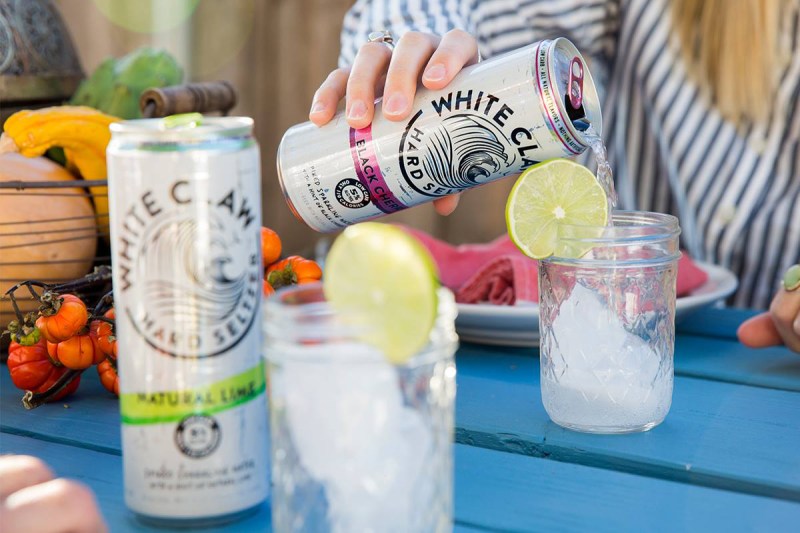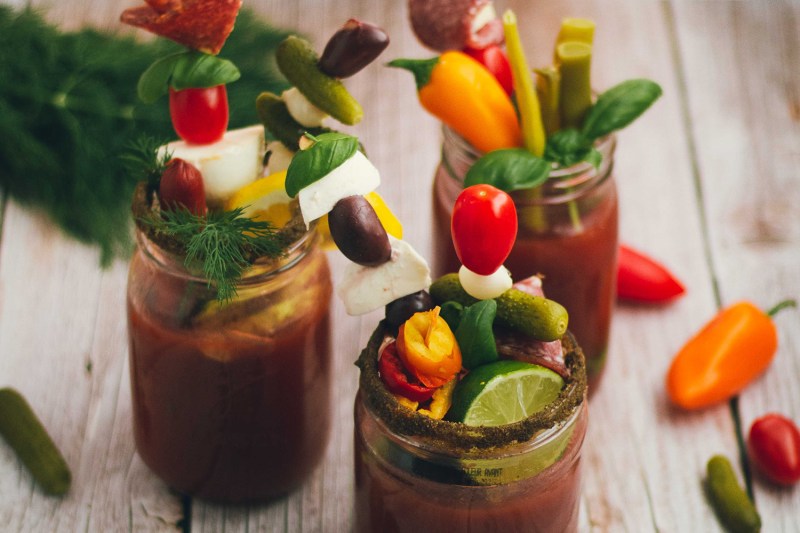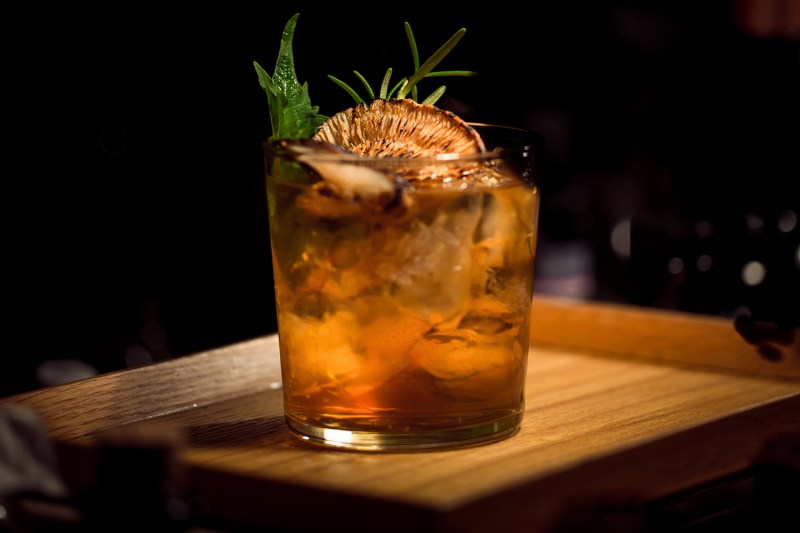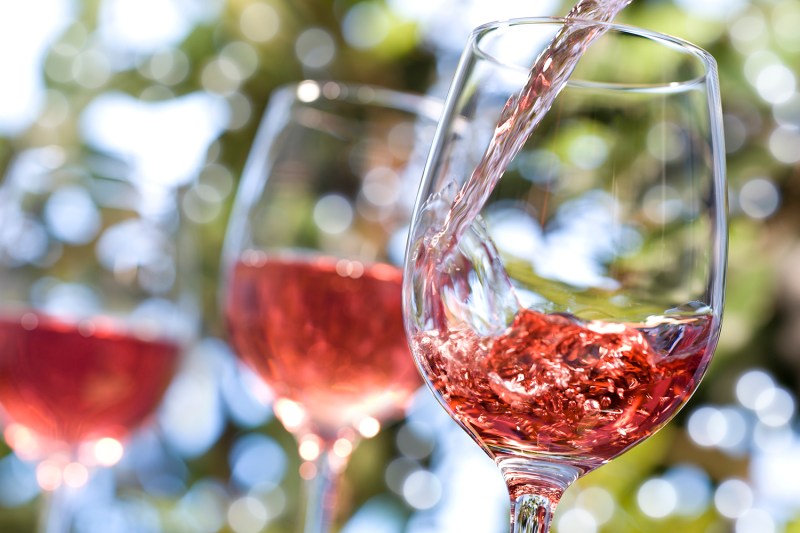You know what they say (and by “they,” we mean “professional bartenders and amateur cocktail nerds like us”): New year, new beverage trends. As we head into 2021, we find ourselves remembering the most hyped-up drinking fads of 2022 and wondering which are worth carrying into the future … and which should remain nostalgic relics of the 2010s. In the interest of expert insight, we asked 12 beverage professionals to share the 2022 trends they’d most like to leave in the past, and we’re bringing you their top 10 (or in this case, bottom 10) picks.
Hard Seltzer
There’s perhaps no alcoholic drink that more fully captured the hearts and livers of 2019 imbibers than “hard” seltzer. These low-cal, low-ABV, gently flavored sippers made appearances at backyard bashes, house parties, dive bars, and even at high-end cocktail lounges. However, their ubiquity led some bartenders to eagerly anticipate the day when they’d slide out of the spotlight. One such bartender is food & beverage director Grant Gedemer of The Godfrey Hotel in Chicago, who tells us that “I definitely hope to see an end to the hard seltzer trend. The world’s bartenders are still very capable of serving a vodka soda, and I’m not sure where that idea got lost. Hard seltzers are not ‘better’ for you than a mixed drink either, just as diet soda isn’t ‘better’ for you than regular soda.”

Principal bartender Will Piquette of Alcove in Boston would especially like to bid farewell to the hard seltzer of the year: the famous (or infamous) White Claw. “I White Claw being served at bars and restaurants [in 2022],” Piquette says, explaining that the very casual nature of White Claw doesn’t lend itself to bar/restaurant service (or bar/restaurant prices). “Leave the White Claw at the beach or your house party. We’re all here to have a good time, but as they say: ‘No Shirt, No Shoes, No Service.’”
Lagers From Craft Breweries
When you think of a typical mass-produced beer, you’re likely imagining a lager. Brands like Budweiser, Coors, and Miller dominate the U.S. market for this light, easy-drinking brew, but in recent years, craft brewers have tried to get in on the action, offering up “artisanal” lagers with much higher price tags than their more well-known counterparts. And according to co-owner Jake Barnett of Old Fashioned Beverage & Hospitality, these lagers aren’t necessarily worth the extra bucks. “I am ready for craft breweries to stop attempting lagers. No craft brewery has the capability to produce a lager with the consistency of Anheuser-Busch or Coors. I buy craft beer for amazing flavors and diversity of styles; if I want plain, beer-flavored refreshment, I’m picking up a sixer of macro-brew,” Barnett states.
Over-the-Top Garnishes
An attractively decorated cocktail can bring an extra — and very welcome — layer of elegance to an evening out. However, in 2019, many bars pushed that concept to its absolute extremes, and Director of Food & Beverage John Onsa of Brim House and The Heights in Toledo, OH thinks that these elaborate displays can distract from the artistry of the cocktail itself. “Things like close mounds of shrubbery and excessive fruit garnishes are costly, wasteful, and frankly overwhelming to the guests. Guests don’t know what to do with them, and they end up mucking up the bar top. I’m a naturalist when it comes to cocktails and believe that simpler is better. I would rather have a bartender educate me on the quality of the spirit and the balance of the cocktail they set before me than distract me with garnishes and small toys on my drink. Connecting with the guest through personality, spirit education, and skill set is the way to bring guests back on a consistent basis,” Onsa tells The Manual.

Beverage Director Maxwell Reis of Gracias Madre in Los Angeles is also pretty over the fancy-garnishes trend, and he specifies one trendy cocktail decoration that he considers especially unnecessary: “Although we’ve had to lean into it a bit, I’m hoping the cocktail world gets over little clothespins as garnishes. I’ll admit that they were cute at first, but I can confidently say they are getting truly out of hand. A million garnishes clothespinned to the side of a cocktail doesn’t make it good. It’s time to move on, y’all.”
Smoked Cocktails
The showmanship of a cocktail finished off with a plume of smoke can’t be denied … but this popular 2019 trend can compromise the quality of the drink itself. Bar director Jeff Rogers of Jester Concepts in Minneapolis explains why (and offers a solution): “The artistry of [cocktail smoking] is great and very cool-looking, but you end up with a very inconsistent cocktail. If you want to add the smoke element, look into smoking ingredients beforehand and integrating those ingredients into a syrup or macerated spirit. This results in a consistent cocktail for the guest.”
Food-Inspired Cocktails
Elite beverage programs expanded well beyond high-end cocktail bars in 2019, with many restaurants devoting as much attention to their cocktail menus as they did to their wine lists. In an effort to pair hard spirits with menu courses, bartenders often chose to build cocktails around classic food items, borrowing flavors from sweet and savory dishes and translating them into libations. But this concept can sometimes lead to muddled taste profiles and less-than-appealing tipples, according to beverage director Shawn Chen of RedFarm and Decoy in New York City.

“One cocktail trend I am happy to say goodbye to is food-inspired cocktails. The flavors range from something as ordinary as Oreo cookies to the more adventurous blue cheese. I do find the concept interesting and have experimented with the idea, but I still prefer to eat my food rather than drink it. Although cocktails and food are inseparable in some ways, there still should be some kind of boundary between the two domains. It’s something that sounds good on paper, but the end result is usually a mixture of artificial flavors that only vaguely mimics the food it’s inspired by,” says Chen.
Confusing Menu Descriptions of Cocktails
Anyone who regularly visits cocktail-centric bars can relate to this experience: you open the menu and find yourself confronted by essay-length descriptions of each libation, each one loaded with fancy buzzwords and intricate jargon that sound impressive, yet provide zero clarity. Co-founder Erick Castro of Raised By Wolves and Polite Provisions in San Diego tells us that “if there is one trend that I hope we leave behind next year, it’s intentionally confusing and obtuse menu descriptors. It’s a shame that so many bartenders (and chefs) feel such insecurity about their own creations that they need to write deliberately pretentious verbiage to make themselves seem more serious. As the food writer Pete Wells once said, ‘a good menu should answer more questions than it creates.’ I am a huge proponent of that philosophy. A guest should not need a doctorate in chemistry to order with confidence. If the drink has a pinch of sea salt, just say it has a pinch of sea salt. Don’t try and gussy it up by listing the ingredient as “dehydrated saline solution of oceanic origin’. All you are doing is confusing people and slowing down service, while at the same time making yourself look like an egotistical maniac.”
Incorrect Myths About Spirits and Cocktails
Because bartenders owe their livelihood to both excellent drink-making skills and a solid repartee with their guests, it makes sense for them to tell interesting stories about the provenance of the cocktails on their lists to boost sales and excite their client bases. Unfortunately, some of the commonly repeated bartender yarns about classic cocktails aren’t accurate, and brand director Jonathan Laurel of West Main Crafting Co. in Lexington, KY has noticed a 2019 uptick in these tall tales, which he hopes will die out in 2022. “I’d love to see bartenders and bar staff stop telling long-debunked myths about cocktails and spirits. The Old Fashioned wasn’t invented at the Pendennis Club, absinthe doesn’t make you trip balls (never did), Bulleit Bourbon isn’t an ‘heirloom’ whiskey, [and so on]. These things make cute sales stories, but the factual history of our industry is way more compelling to a guest,” Laurel tells The Manual.
Natural Wine Bros
The trend of natural, organic, and biodynamic wines has prevailed for several years and isn’t disappearing any time soon. That said, the culture around this movement may be inching in a regrettable direction, according to general manager and lead bartender Jeremy Allen of MiniBar Hollywood in Los Angeles.

“The increase in popularity of natural wines (an undefined lifestyle term) is a good thing for us all but hasn’t necessarily shown any improvements to actual service in bars and restaurants. A lot of the new generation of ‘cork dorks’ are lacking a little bit of a service background, and are also lacking in taste (all types of taste). Just because it’s a ‘natural wine’ doesn’t mean that it tastes good, and just because you love natural wine doesn’t mean that you love serving guests. The mustache-and-tattoo attitude ‘mixologists’ [once] got lampooned for has now resurfaced in bottle shops and wine bars. We all need to be careful to remember to make customers feel welcome; they have too many options to accept the attitude. I have two wine bars within a block of my house now, and this wasn’t always the case,” Allen advises.
The “Mocktail” Term
In certain situations, a trend enters the mainstream, establishes a formidable presence, and proves itself worthy of inclusion in the cocktail canon. The 2019 trend most deserving of this distinction involves the rise of zero-proof libations, which were commonly referred to as “mocktails” throughout this past year. However, Lynnette Marrero, co-founder of Speed Rack and bar director of Llama Inn and Llama San in NYC, thinks that it’s time to remove that diminutive term from our collective vocabulary and take these non-alcoholic beverages seriously. “Adapt to the new terminology of no- and low- proof instead of using the term ‘mocktails’. This [movement] is growing and doesn’t seem to be slowing down,” Marrero cautions bartenders.
Bright and Fruity Flavor Profiles
Fruit reigned supreme in the realm of 2019 cocktail flavors, thanks in part to the resurgence of tiki culture and other retro drinks. However, assistant manager Megan Campbell of Cafe Rule in Hickory, NC yearns to see an emphasis on earthy, potentially-funky flavors in 2022 instead of the current fruit-forward status quo: “I have never been a fan of sweet, fruity cocktails, especially those built with flavored syrups and liqueurs like grenadine and blue curaçao. These ingredients can easily be used as a crutch instead of creating new and unique flavor combinations, so in 2022 I’d like to see a push toward cocktails with more complex, earthier profiles using spirits like chartreuse or gin. In 2019, I also saw a prominent use of basil and grapefruit, a pairing I think is overused and a bit tired. I’d like bright, and sometimes overpowering, flavor combinations to be replaced by ingredients with more earthy and subtle notes, such as sage and rosemary.”



